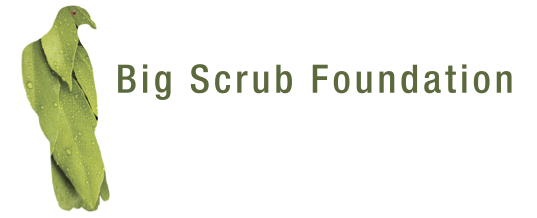2022-23 was another excellent year for the Foundation.
We continue to provide strong support for the key programs of our sister organisation, Big Scrub Rainforest Conservancy – formerly called Big Scrub Landcare. As part of this support, we completed, after the year-end, the Foundation's first government grant-funded project. This $108,000 grant financed leaf sample collections and DNA sequencing of six species as part of our major contribution of more than $800,000 to the Big Scrub Rainforest Conservancy's world-leading Science Saving Rainforests Program. The NSW government is contributing $820,000 to the Program and the Royal Botanic Garden Sydney is providing more than $1.2m in in-kind contributions.
The Science Saving Rainforests Program has made excellent progress in collecting leaf samples. To date, leaf samples have been collected from 12,352 individual trees. Collections have been completed across the range of 23 key structural species and 9 threatened species. Good progress has also been made in leaf sample collections for the remaining seven key structural species and 21 threatened species.
DNA has been extracted and sequenced from 5,538 leaf samples collected across the range of 22 species by our contractor, Diversity Arrays Technology.
The DNA data is transmitted for genome analysis to our major partner, the Research Centre for Ecosystem Resilience, part of the Royal Botanic Garden Sydney. To date the genomes of 10 species have been analysed. These analyses will identify, for each tree species, up to 30 or more populations where leaf samples have been collected and which would collectively capture 90% of the genetic diversity of the species in our local region as well as targeted populations to our north where the current climate matches the 50 year forecasts for our region.
This optimal genetic diversity will be incorporated into planting stock grown from propagules collected in each of the identified populations; it will help avoid inbreeding and provide the best possible resilience to climate change and other threats such as new diseases and insect predators. The planting stock will be used in developing a living seed bank plantation of up to 30 threatened species and up to 30 key structural species that will after some years be a source of planting stock for more sustainable plantings to restore critically endangered lowland subtropical rainforest and recovery plantings of its many threatened species. The planting stock will also be used in one or more demonstration sites to illustrate this methodology.
The Foundation is also a major contributor to Big Scrub Rainforest Conservancy's ongoing Remnant Care Program. This important ongoing Program rehabilitates and provides ongoing care of more than 500ha of critically endangered lowland subtropical rainforest in 42 Big Scrub remnants, including ten in National Parks and Nature Reserves plus other important remnants on public and private land. The Conservancy organises regular weed control at each remnant by professional bush regenerators, who also monitor outcomes including improvements in native rainforest vegetation and reduction in weeds. Special care is given to threatened species to facilitate their recovery.
During the past year the Foundation contributed over $200,000 to recently completed/current projects that Big Scrub Foundation and Big Scrub Rainforest Conservancy have undertaken in partnership with the Saving our Species unit of the NSW Department of Planning and Environment and the NSW Environmental Trust. The Conservancy has successfully completed the first year of a three year Remnant Care Project that is being funded by a $150,000 grant from the NSW Environmental Trust.
It is encouraging that some landholders are continuing to take over the care of their remnants from us. Last year, Ballina Shire Council took over the care of four of its remnants that our sister organisation had been looking after for more than 20 years.
In 2022-23 the Conservancy also deployed considerable resources repairing the damage caused to a number of remnants by the record floods in a project funded by North Coast Local Land Services.
The Foundation has also provided support for the Conservancy's other two ongoing programs: Community Engagement and Re-establishing Rainforest.
The Conservancy’s programs that the Foundation supports will make a significant contribution to helping save from extinction our Gondwana-descended, internationally significant Critically Endangered Lowland Subtropical Rainforest and its many threatened species. The methodology of our Science Saving Rainforests Program can be applied to restore degraded rainforest and other seriously degraded forest ecosystems and recover their threatened species elsewhere in Australia and around the world. The methodology can also be applied to increase the long-term sustainability of major reforestation projects and the longevity of carbon sequestration plantings. For more information on our SSR program, please visit the Conservancy’s website.
The Foundation's financial statements for the year ended 30 June 2023 demonstrate its strong financial position, with net assets of $4.3m. Cash in the investment portfolio managed by Escala Partners currently amounts to almost $0.5m. The market value of investments is currently $268,000 above cost.
On behalf of the Directors, I thank members who have donated to the Foundation in 2022-23 and invite more members to become donors and participate in the world-leading ecological restoration projects that the Foundation plays a major role in financing. Donations can be simply made by electronic funds transfer to BSF’s donations bank account (BSB: 062 565 Account number: 1083 3458).
Tony Parkes AO, BSc (Hons), PhD
Executive Chair and Founder














